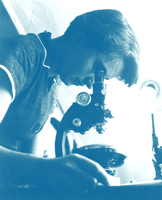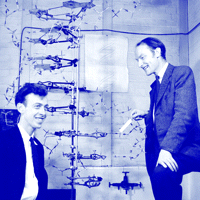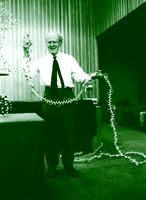1951–1960
Missing Pieces
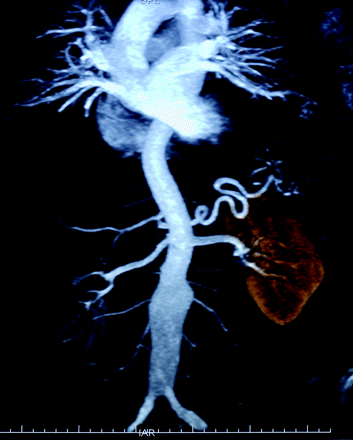
The 1950s saw the peak of the post-World War II baby boom, and technological innovations promised to extend the longevity of the growing population. Joseph Murray, operating on identical twins at Peter Brent Brigham Hospital in Boston, made medical history in 1954 by performing the first organ (kidney) transplant; only later would immunosuppressants become available and allow for transplants between unrelated individuals. In 1957, Swedish pharmacologist Arvid Carlsson began to put together the pieces of another medical puzzle. He showed that dopamine acted not simply as a precursor to norepinephrine, but also functioned in its own right as a neurotransmitter. In the following years, he used rabbits to show that decreased dopamine levels caused behavior similar to that of Parkinson’s disease. Sure enough, administration of the dopamine precursor L-Dopa proved to alleviate Parkinson’s symptoms. Also in 1957, haloperidol, a dopamine receptor antagonist, was launched (Janssen Pharmaceutica, Belgium) as a treatment for schizophrenia.

Model Mischief
After World War II, the United States and the Soviet Union faced the Cold War, a conflict of diplomacy and intelligence. The Soviets struck an ideological blow when they launched Sputnik, the first satellite to orbit the earth. Their success garnered the enthusiasm of the Soviet people and spurred American determination to devise even more sophisticated spacecraft. In another battle of wits, a young scientist named Rosalind Franklin produced stunning X-ray diffraction pictures of DNA. As James Watson would later account in The Double Helix, Maurice Wilkins showed “Rosy’s” data to Watson and Francis Crick. Watson used Franklin’s data, along with an exacto knife, a straight edge, white cardboard, and paste, to build a physical representation of the double helix. The resulting model was forceful in detailing purine– pyrimidine complementarity, and it reflected key features discovered by Franklin herself, including the external placement of phosphate moieties as well as the antiparallel double helix. Despite her insights and contributions, attribution for discovery of the double helix—along with the 1962 Nobel Prize—went to Wilkins, Watson, and Crick. Franklin had died of cancer in 1958.
Twisted Fortune
The landmark elucidation of the double helix looms in modern history, but surrounding events had even more to offer to pharmacologists. The same year that the Watson-Crick model was published, Crick’s thesis supervisor, Max Perutz, conquered “the phase problem” that had foiled the analysis of X-ray diffraction patterns generated from protein crystals. In 1953, Perutz showed that the comparison of proteins crystallized with and without heavy atoms attached allowed the patterns to be “phased.” Meanwhile, the talented crystallographer John Kendrew had hit a snag in determining the structure of myoglobin. His diffraction patterns were clean, but it took Perutz’s discovery for Kendrew to solve the first three-dimensional structure of a protein. The 6-angstrom–resolution structure of whale myoglobin (1957) was quickly followed by Perutz’s structural solution of hemoglobin (1959).
The King
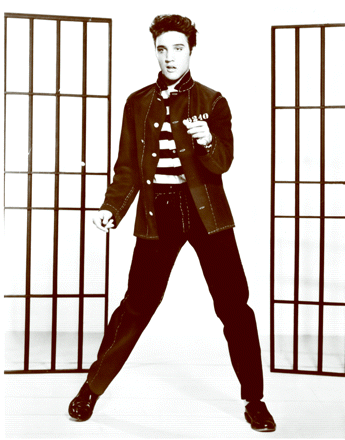
While the Soviet Union was busy with Sputnik, a stuttering mama’s boy from East Tupelo, Mississippi, was immersing himself in Southern gospel and Beale Street blues. Elvis Presley recorded his first demo, for which he paid $3.98, at the Memphis Recording Service. In early performances, his nervous hip gyrations drove the girls mad, and before long, Presley’s sets, outfits, and dancing were intentionally wild, fueling the new rock n’ roll craze. His first single (Heartbreak Hotel) was released in January 1956, and by fall he had four gold records and captivated over 50 million viewers of the Ed Sullivan Show. After a larger-than-life career, Elvis died, only two decades later, from an enlarged heart and prescription drug abuse.
Pecking Order and Active Factors
Already regarded as an interdisciplinary science, pharmacology spawned two new subdisciplines in the 1950s. In mid decade, Peter B. Dews was a new professor of pharmacology at Harvard who began collaborations with psychologist B.F. Skinner. Counting the pecking of pigeons, Dews published a series of articles in JPET showing that a single drug could have different effects on a single behavior, depending on experimental context. He thus advanced the new science of behavioral pharmacology. At the same time, Earl Sutherland and Ted Rall found an “active factor” in liver extracts that stimulated enzyme production. Produced in response to hormones, the unusual factor was heat-stable, dialyzable, and ionic. With the discovery of cAMP, Sutherland and Rall launched the multidisciplinary subdiscipline of cell signaling, which today continues to map the complex pathways that govern cell function.

- © American Society for Pharmacology and Experimental Theraputics 2008

